smart camera
Latest
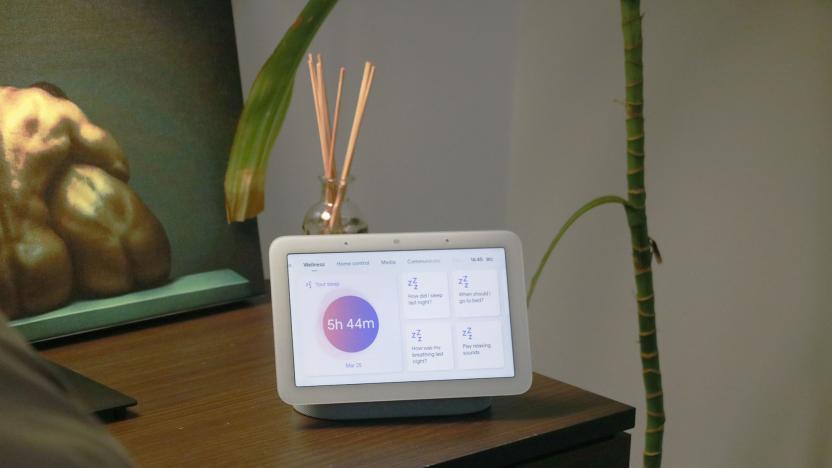
Google's Nest Hub and Nest Cam bundle is $50 off at B&H
The smart home products usually cost $100 each.
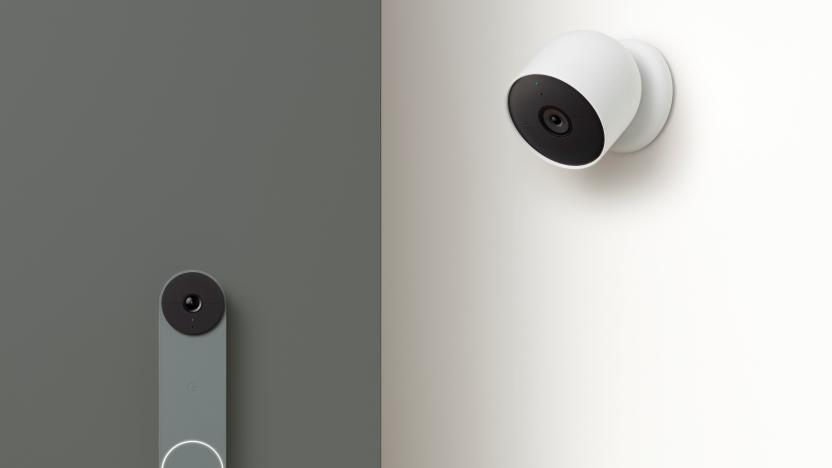
Google's new Nest Cam and Doorbell can run on batteries
It also announced a Nest Cam with a floodlight and a second-gen wired Nest Cam.
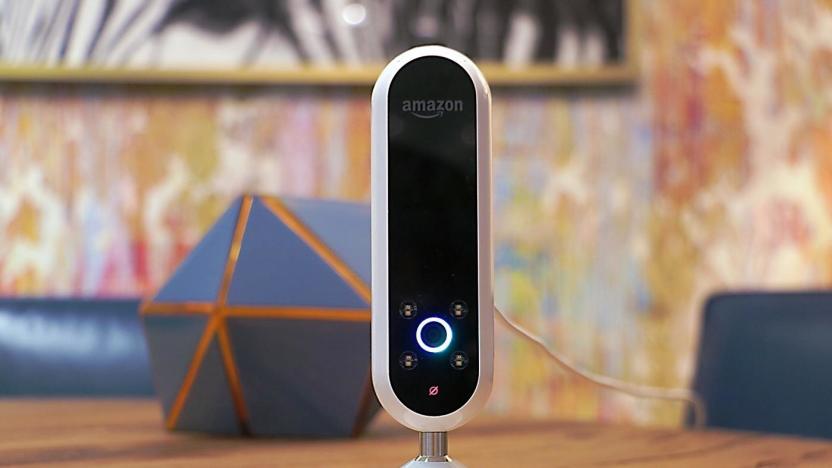
Amazon's Echo Look fashion camera will stop working on July 24th
Amazon is shutting down Echo Look functionality on July 24th, but you can get a free Echo Show 5 as compensation.
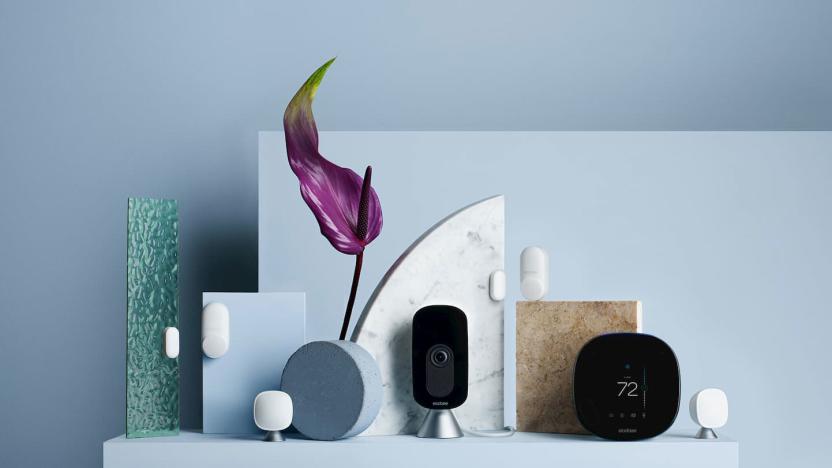
Ecobee expands its smart home lineup with a camera and more sensors
Ecobee's smart home monitoring system can change your device settings automatically.
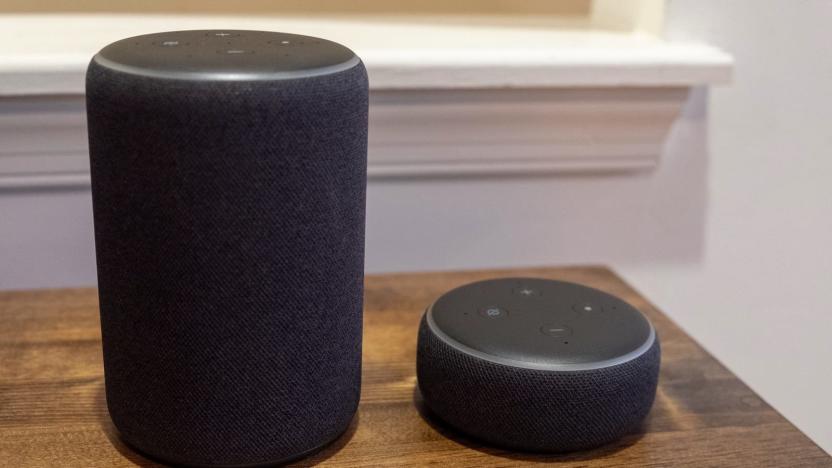
Tell Alexa to set a routine for sunrise instead of a specific time
Amazon is rolling out a number of new options for Alexa routines. Starting today, you can set up a routine to trigger actions when your alarm stops. You might prompt Alexa to read your flash briefing a few minutes after your alarm goes off, or perhaps to turn on the coffee machine once you've finally stopped hitting the snooze button.

Editorial: Android cameras -- could Samsung's Galaxy gamble save the point-and-shoot industry?
WiFi in a camera. No matter the practicality or the cost of adding wireless functionality, it's become a must for high-end point-and-shoots, and if they don't pack it now, they soon will. But access hasn't become as prolific as protocol prophets once preached -- we're at the mercy of pay gates, passwords and bandwidth limitations, even today. Our smartphones, on the other hand, are always connected. There's no need to fuss with hexadecimals or other cryptic keys -- assuming we haven't crossed an international border, getting online is as convenient as taking a breath. As the world's most prolific smartphone maker, Samsung is very much invested in cellular. Sure, there were gasps from the crowd at last week's Unpacked, but built-in 4G makes perfect sense, and while WiFi and a Micro SIM may make the Galaxy Camera an instant winner, it's Android that completes the package, as the glue that cements this latest category's promise. Samsung may be the pioneer, but should other manufacturers be scrambling to shift roadmaps, ready to embrace this new digital direction? Tap past the break for our take.

Samsung announces EK-GC100 Galaxy Camera with Android Jelly Bean, massive 4.8-inch display, 21x zoom, WiFi and 4G connectivity (hands-on)
During a visit to Samsung's headquarters in Korea earlier this year, we had a chance to talk shop with company execs. The electronics maker's existing mirrorless and point-and-shoot lineups were the primary topic of discussion, but we did catch wind of a Galaxy product possibly to come, from the camera division. A Galaxy camera? That could only mean Android, and a heavy heaping of touch and connectivity. At the time, reps admitted only that they were "considering" such a device, and declined to provide any hint as to design or functionality. And we haven't heard a further peep, until today. As you may have gathered from recent rumors, Samsung's Galaxy Note II is not the only product to be Unpacked this afternoon. Sure enough, the anticipated Galaxy Camera is also on order, and we have all the juicy details just past the break.%Gallery-163618%%Gallery-163626%

Samsung clarifies camera production shift, confirms commitment to point-and-shoot models
We've heard reports that Samsung has shifted focus at some of its camera manufacturing facilities away from point-and-shoot cameras with the objective of ramping up production of its compact mirrorless models. And while this move implies that the company's pocketable compacts could be doomed, that's simply not the case. We spoke with Reid Sullivan, Samsung's Senior Vice President of Mobile Entertainment, who reinforced the company's continuing commitment to developing and manufacturing point-and-shoot models -- in short, pocketable cameras remain a focus for the company, which simply made manufacturing adjustments to accommodate an anticipated increase in demand for recently-launched NX20, NX210 and NX1000. Point-and-shoots, for better or worse, are here to stay, and Sullivan explained that while we're unlikely to see new sub-$100 cameras make their debut, there's plenty in the works on the SMART front, with new launches in store for upcoming events like Photokina and CES. Whether there will continue to be demand for point-and-shoots remains to be seen, and while consumers are clearly turning to smartphones for casual shooting, Samsung appears to be in no hurry to abandon the point-and-shoot form-factor.

Does Samsung's point-and-shoot departure mark an industry-wide shift to mobile?
Samsung shuns point-and-shoot cameras, switches factory to pricier mirrorless types Samsung Galaxy S III focuses on photography sharing features, not cutting-edge optics Samsung considering Android-based digital camera Samsung's CES camera lineup had a single focus across the range: wireless connectivity. The company's flagship point-and-shoot, the 14-megapixel WB150F, boasts built-in WiFi at the very top of its feature shortlist. In fact, until you make your way to the third (and only) capture-related detail (an 18x optical zoom lens), you'd be hard-pressed to distinguish the dedicated device from some of Samsung's other camera-equipped offerings. With its latest generation of "Smart Cameras," the company moved to further bridge the gap between its gamut of portable devices, by bringing key smartphone features to its digital imaging line. As it turns out, the move was simply a crutch -- an opportunity to refresh models with technologies in which the company has already made significant investments. And it appears to have resulted in only a slight delay of the inevitable. We now know what to expect for Samsung's point-and-shoots -- pocketable models will step aside to make room for NX-series interchangeable lens cameras, and compact fans will continue to turn to Galaxy all-on-ones for their on-the-go shooting needs. Join us past the break for a closer look at how the move could impact the industry, and what the future may hold for the (formerly) beloved point-and-shoot.

BlackBerry 10 camera app gets 'timeline lens,' bad photographers get a do-over
Thorsten Heins is on stage at BlackBerry World 2012 and has just unveiled the new BB10 camera app. It is designed to capture those "magic moments" you miss by not hitting that shutter quick enough. If you miss it by a couple of seconds, you can cycle back through the camera's cache with a circular "timeline" lens and take your pick from the previous seconds worth of frames. It's eerily reminiscent of technology used in the Nikon 1 series, although the implication here is that as soon as the camera app is loaded, it'll start recording frames for your ease of use.

Polaroid announces Android-powered SC1630 Smart Camera, slated for release this year
Here's something we weren't expecting to see at CES today: Polaroid has just announced a new camera... powered by Android. The company's new, 16-megapixel SC1630 Smart Camera features a 3x optical zoom lens, 3.2-inch touch-based display, 36-108mm lens and WiFi capabilities, but the real story here is the Android UI integration. With this five-ounce portable, users can take shots in 18 different scene modes and instantly upload their images to social networking sites. Plus, since it's linked to the Android Market, they'll even be able to sync it up with any of the myriad photo apps already available to smartphone and tablet users, while finding comfort in that oh-so familiar Android UI. Pricing is still a mystery and Polaroid hasn't offered a release date more specific than "2012," but we'll hopefully find out more when we get our hands on it here in Las Vegas. Full PR after the break.

Zdenek Kalal's object tracking algorithm learns on the fly, likely to make next 007 flick (video)
Microsoft's own OneVision Video Recognizer may be novel, but if the folks in Redmond are seriously looking to take things next-level, they should probably cast their gaze across the pond. Zdenek Kalal, a researcher at the University of Surrey, has just created what may be the most sophisticated vision system known to the civilian world. In essence, it takes the mundane task of tracking objects to an entirely new platform, enabling users to select an object on the fly and have the algorithm immediately start tracking something new. Within seconds, it's able to maintain a lock even if your object twists, turns, or leaves / returns. Furthermore, these "objects" could be used as air mice if you force it to track your digits, and if you teach it what your staff looks like, you'll have a fully automated security scanner that can recognize faces and grant / deny access based on its database of white-listed individuals. Frankly, we'd rather you see it for yourself than listen to us extolling its virtues -- vid's after the break, per usual.

DARPA sets sights on cameras that understand
DARPA wants to let you all know that its plans for the robot apocalypse are still going strong. The agency's got IBM working on the brains, has an RFI out on the skin, and is handling propulsion and motor control in-house. Next up? Eyeballs. In order to give its robots the same sort of "visual intelligence" currently limited to animals, DARPA is kicking off a new program called The Mind's Eye with a one-day scientific conference this April. The goal is a "smart camera" that can not only recognize objects, but also be able to describe what they're doing and why, allowing unmanned bots and surveillance systems to report back, or -- we're extrapolating here -- make tactical decisions of their own. To be clear, there's no funding or formal proposal requests for this project quite yet. But if the code does come to fruition, DARPA, please: make sure autoexec.bat includes a few Prime Directives.

Samsung crams WiFi, GPS and Bluetooth 2.0 into well-specced CL65 point-and-shoot
If you're anything like us (and let's face it, you're exactly like us), you've been counting down the nanoseconds until Samsung finally revealed what its 'Tap and Take' campaign was all about. This, folks, is it. As many of you sharp folks surmised, Samsung is delving deep into the intelligent camera arena, equipping its luscious CL65 (no, not that CL65) with a 12.2 megapixel sensor, 5x optical zoom, 720p (30fps) movie mode, an HDMI output, and a 3.5-inch touchscreen that utilizes a Smart Gesture user interface. Furthermore, the camera can access certain features when simply tilted, and the built-in Bluetooth 2.0 module enables users to easily share images with other BT-equipped devices. Considering that you're probably still not impressed, how's about a little more on the cutting-edge front? The point-and-shoot also includes WiFi (much like Sony's disappointing DSC-G3 and Panny's Lumix DMC-TZ50), giving users the ability to upload directly to Facebook, Picasa and YouTube. Unfortunately, all photos uploaded via WiFi will be reduced to a resolution of two megapixels, and while we understand the reasoning, we figure an option for full / reduced res would've been a much better compromise. At any rate, the device also includes DLNA support for streaming to HDTVs and the like, while the integrated GPS chip handles the geotagging. The cam, which is admittedly bursting at the seams with features, will land next month in the US for $399.99. Full release is after the break.

Samsung's 'Tap and Take' teaser hints at revolutionary, unicorn-approved Smart Cameras
Samsung sure has been milking this whole "teaser" thing for all it's worth of late, with the newest mystery coming to us in the form of its fresh 'Tap and Take' campaign. From now until August 12th, users can give the read link a visit in order to ingest clues about the outfit's upcoming line of Smart Cameras. These wildly intelligent shooters will purportedly "transform the way consumers take pictures," and they just might provide each and every American with free health care, solve world hunger and put the mighty Hubble to shame. The whole thing will be revealed in full on August 13th, but for now, why not drop a comment below as to what you think will be so revolutionary about the forthcoming point-and-shoot range?[Via Korea Newswire]

Matrox Iris GT smart camera brings Windows CE to Atom-land
Matrox's new Iris GT "smart camera" doesn't mark the first time that the Atom processor and Windows CE have run into each other, but it's certainly one of the most interesting encounters, even if it's one that most folks likely won't see first hand. Apparently, the camera is intended to be used in various "machine vision" applications, like locating and reading barcodes or measuring the geometry of 2D objects, but we think you'll agree that it has one other, not quite official use written all over it: robot eye. The camera's specs certainly seem to make that a possibility, and include that ever-present 1.6GHz Atom processor, 256MB of RAM, 1GB of flash storage, a gigabit Ethernet port, and USB 2.0 and RS232 ports, not to mention accommodations for a number of interchangeable lenses -- it's even dust-proof and "washable." No word on a price just yet, but Matrox says it'll be available sometime in the first quarter of next year.[Via jkOnTheRun]






